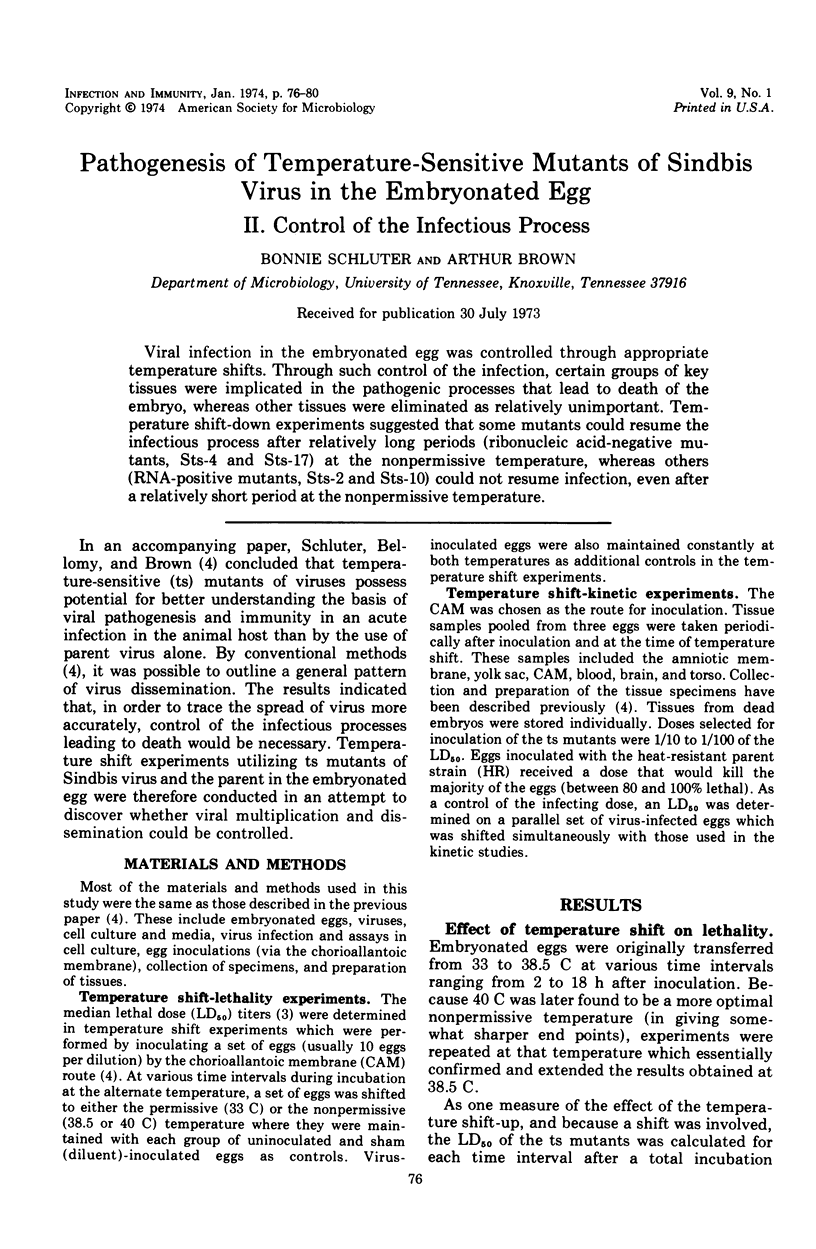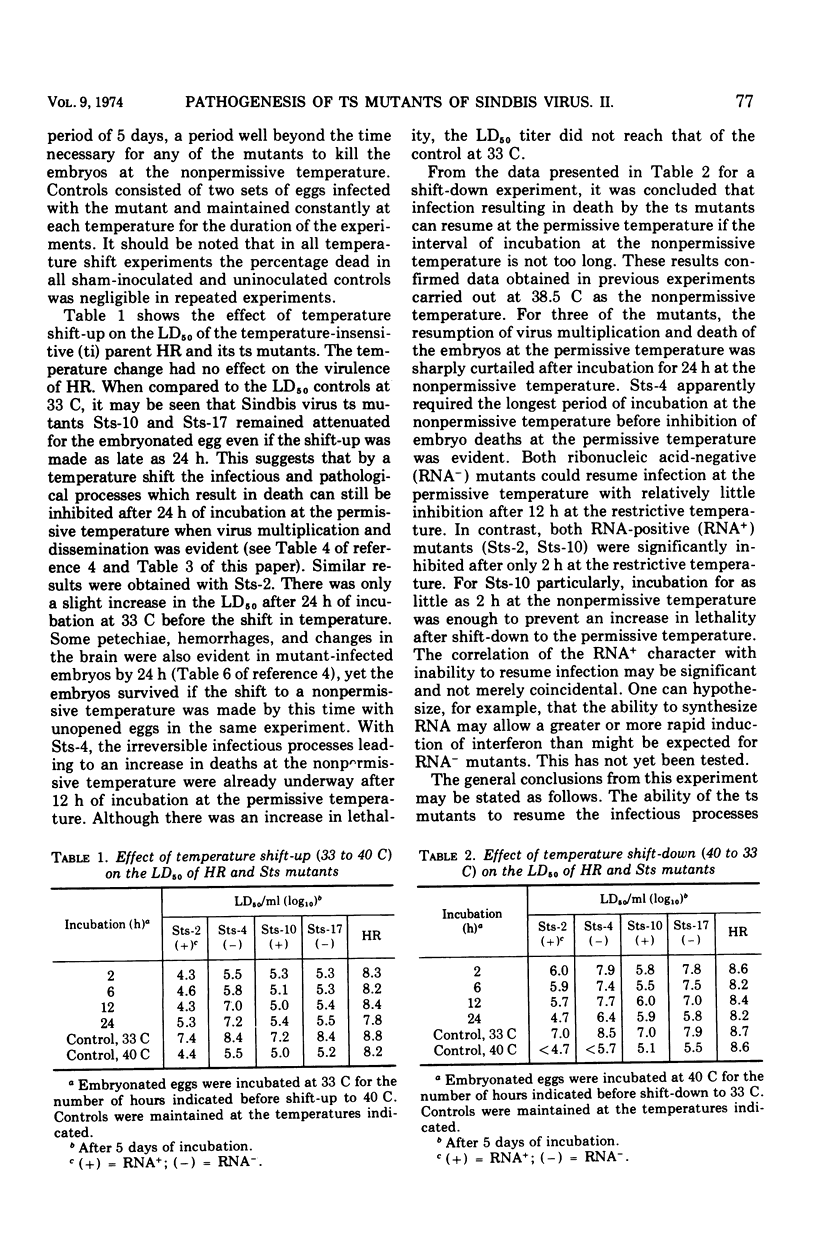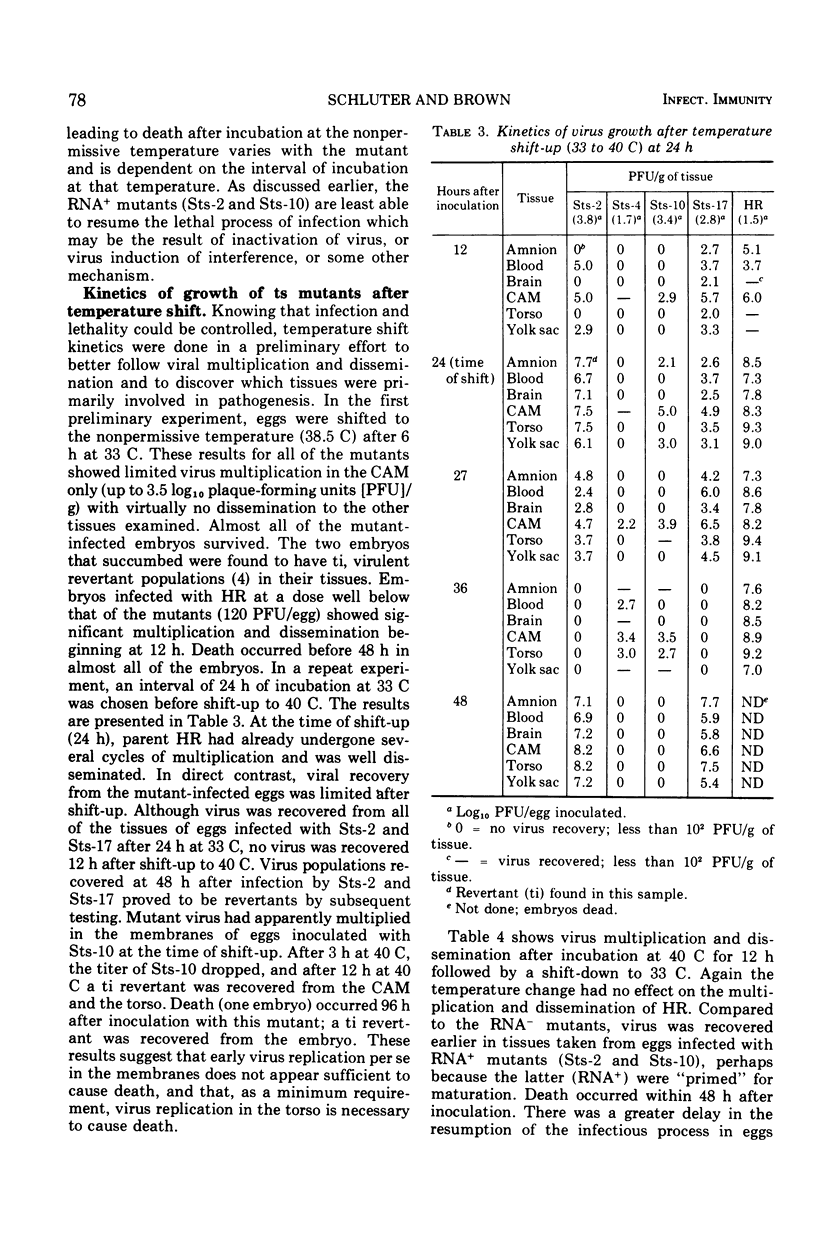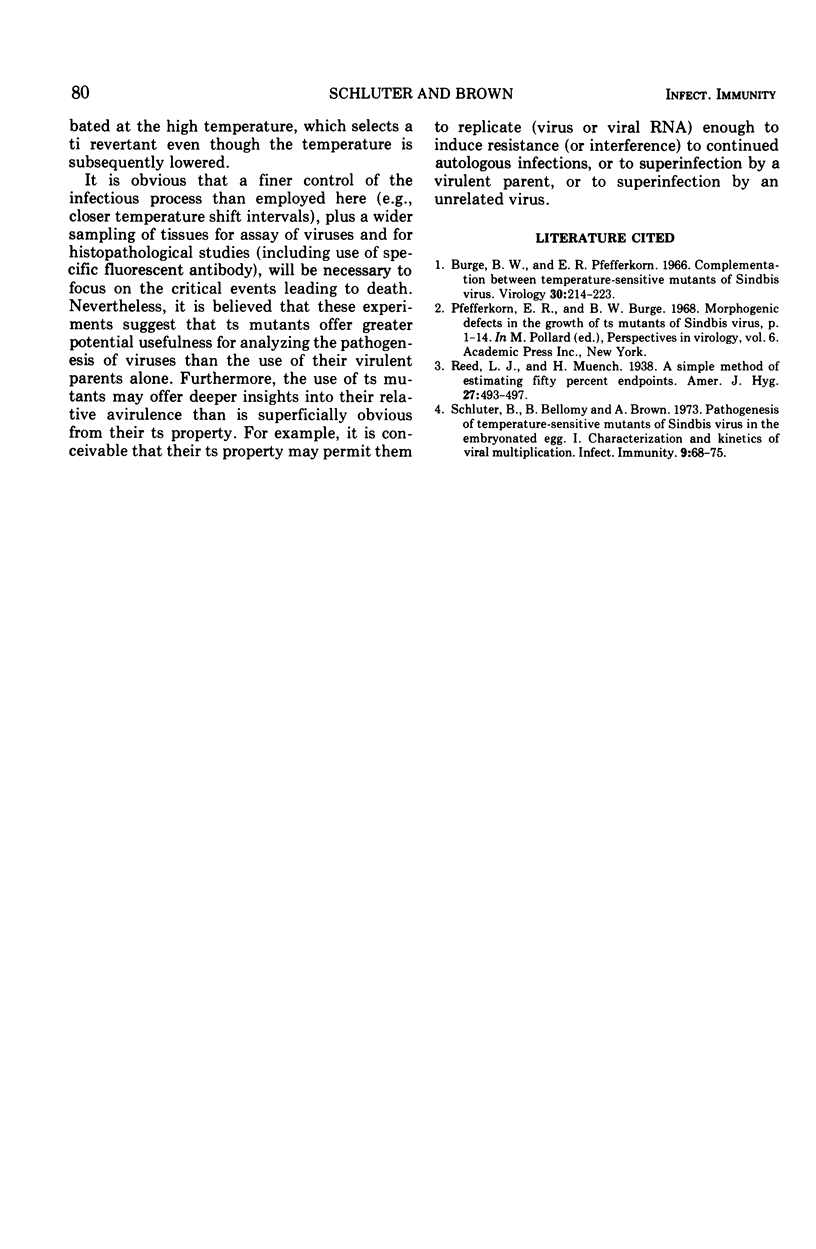Abstract
Viral infection in the embryonated egg was controlled through appropriate temperature shifts. Through such control of the infection, certain groups of key tissues were implicated in the pathogenic processes that lead to death of the embryo, whereas other tissues were eliminated as relatively unimportant. Temperature shift-down experiments suggested that some mutants could resume the infectious process after relatively long periods (ribonucleic acid-negative mutants, Sts-4 and Sts-17) at the nonpermissive temperature, whereas others (RNA-positive mutants, Sts-2 and Sts-10) could not resume infection, even after a relatively short period at the nonpermissive temperature.
Full text
PDF




Selected References
These references are in PubMed. This may not be the complete list of references from this article.
- Burge B. W., Pfefferkorn E. R. Complementation between temperature-sensitive mutants of Sindbis virus. Virology. 1966 Oct;30(2):214–223. doi: 10.1016/0042-6822(66)90097-3. [DOI] [PubMed] [Google Scholar]
- Schluter B., Bellomy B., Brown A. Pathogenesis of temperature-sensitive mutants of sindbis virus in the embryonated egg. I. Characterization and kinetics of viral multiplication. Infect Immun. 1974 Jan;9(1):68–75. doi: 10.1128/iai.9.1.68-75.1974. [DOI] [PMC free article] [PubMed] [Google Scholar]


